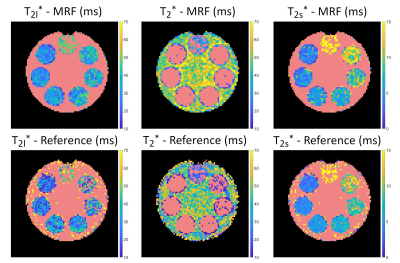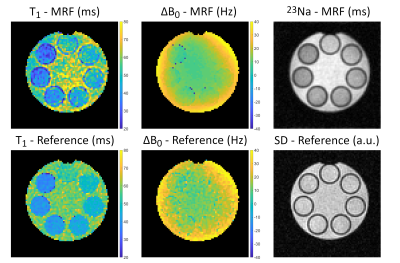Fabian J. Kratzer1, Sebastian Flassbeck1,2,3, Sebastian Schmitter1,4, Tobias Wilferth5, Arthur W. Magill1, Benjamin R. Knowles1, Tanja Platt1, Peter Bachert1, Mark E. Ladd1, and Armin M. Nagel1,5
1Medical Physics in Radiology, German Cancer Research Center (DKFZ), Heidelberg, Germany, 2Center for Advanded Imaging Innovation and Research, New York University, New York, NY, United States, 3Center for Biomedical Imaging, Dept. of Radiology, New York University, New York, NY, United States, 4Physikalisch Technische Bundesanstalt (PTB), Braunschweig and Berlin, Germany, 5Institute of Radiology, University Hospital Erlangen, Friedrich-Alexander-Universität Erlangen (FAU), Erlangen, Germany
1Medical Physics in Radiology, German Cancer Research Center (DKFZ), Heidelberg, Germany, 2Center for Advanded Imaging Innovation and Research, New York University, New York, NY, United States, 3Center for Biomedical Imaging, Dept. of Radiology, New York University, New York, NY, United States, 4Physikalisch Technische Bundesanstalt (PTB), Braunschweig and Berlin, Germany, 5Institute of Radiology, University Hospital Erlangen, Friedrich-Alexander-Universität Erlangen (FAU), Erlangen, Germany
A 3D 23Na-MRF
technique for simultaneous quantification of T1, T2s*,
T2l*, T2* and ΔB0 of is
presented, which is based on irreducible spherical tensor operator simulations.
Successful parameter quantification in a phantom is demonstrated.

Fig.3: Phantom measurements of the transverse relaxation acquired with MRF (top) and the reference method (bottom). Here, both a mono- and a biexponential FID were fitted to multi-echo GRE images (FA=90°;TR=200ms;TE: 32 samples in [0.35,54.6]ms;Tacq=1h47min). The red masks in the T2l* and T2s* maps indicate pixels that were determined to relax monoexponentially (biexponentially in T2* maps). For the reference measurement, this distinction was determined by the goodness of the fit R2, whereas MRF determined this differentiation intrinsically in the dictionary matching step.

Fig.2:
Measurements of T1 and ΔB0 in a
phantom with 23Na-MRF (top) and the references methods (bottom). The
measurement time of 23Na-MRF was 1h4min. Furthermore, the 1st frame of the
MRF data after compression into the new basis (23Na
image) and a spin density (SD) image are shown. The T1
reference was acquired via fitting a monoexponential model to the data of an IR
sequence with varying inversion time (FA=90°,TR=290ms;TI =
[4,20,40,70,100,130,170,200,250]ms,Tacq=5h48min). ΔB0 was determined via a phase difference measurement
(FA=45°;TR=25ms;TE=[0.55,5.55]ms,Tacq=7min).
